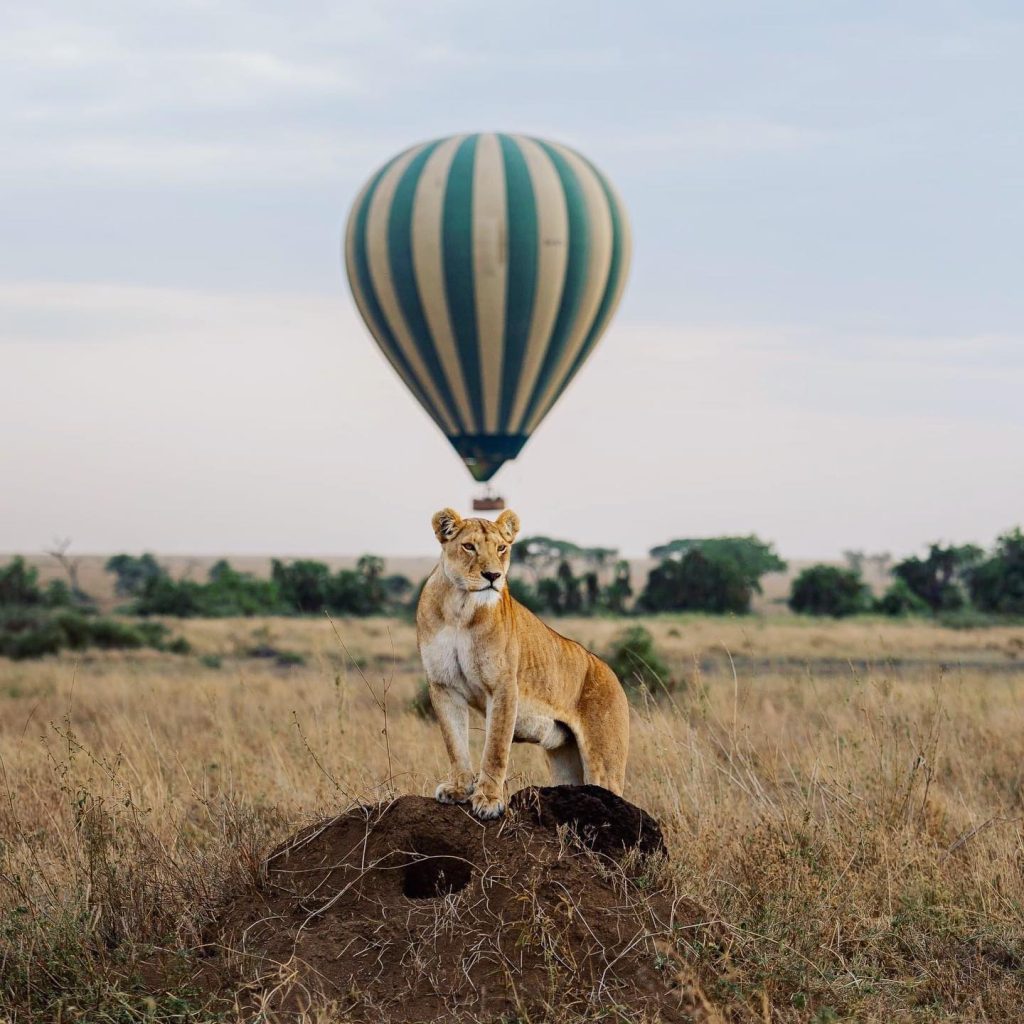Serengeti National Park
overview
Serengeti is the biggest National Park of Tanzania and even listed on the World Heritage List of Unesco. The name of the park comes from the Maasai word ‘siringet’ which means ‘endless plains’. This is a very suitable name as it is as big as 14800 square kilometers. Over a hundred years ago the Maasai were the first group of people to set foot on the Serengeti plains. During your safari your will see the Maasai who still live there.



Serengeti is the place to see big cats. This park is world famous for its high population of lions, but you can also spot many cheetahs and leopards. Another reason why many people visit this unique ecosystem is the Big Migration. Every year more than a million wildebeest, zebras and Thomson-gazelles migrate following the rain. The migration is like the weather, unpredictable. To increase the chance of spotting the migration you can follow these rules:
January till May, most likely the migration will be in southern Serengeti and Ndutu. June till August, the migration moves to western Serengeti. September and October, the migration will be between western and northern Serengeti in Ikoma area. November, the migration will be up north close to the Maasai Mara. December, the migration will make a huge run down south again.
With thousands of hunters and preys living together, you can imagine that a lot of kills happen daily. By starting your safari early when the big cats are most active, you will increase the chance of spotting a kill. These kills attract vultures and other birds who feed on carcasses of dead animals. These feasts are a pleasure for the eye. Have a look at our movies for a preview.
About Serengeti National Park
Size: 14,763 sq km (5,700 sq miles).
Location: 335km (208 miles) from Arusha, stretching north to Kenya and bordering Lake Victoria to the west.
What To Do?
Hot air balloon safaris, walking safari, picnicking, game drives, bush lunch/dinner can be arranged with hotels/tour operators. Maasai rock paintings and musical rocks.
Visit neighbouring Ngorongoro Crater, Olduvai Gorge, Ol Doinyo Lengai volcano and Lake Natron’s flamingos.
Getting There
Scheduled and charter flights from Arusha, Lake Manyara and Mwanza.
Drive from Arusha, Lake Manyara, Tarangire or Ngorongoro Crater.
When To Go?
To follow the wildebeest migration, December-July. To see predators, June-October
Accommodation
Four lodges, six luxury tented camps and campsites scattered through the park; one new lodge will be opened next season (Bilila Lodge); one luxury camp, a lodge and two tented camps just outside.
Other Related Destinations
Serengeti National Park
- Safari Destinations
Serengeti is the biggest National Park of Tanzania and even listed on the World Heritage List of Unesco.
Ngorongoro Conservation Area
- Safari Destinations
The Ngorongoro Conservation Area (NCA) is actually part of the Serengeti plains to which the Maasai Mara (Kenya) also belongs to.
Tarangire National Park
- Safari Destinations
This park attracts a great amount of animals because it contains an important water source, the Tarangire river.
Lake Manyara National Park
- Safari Destinations
Only one third of this national park is land, the rest is swamp or water. The area has a size of 325km²
Arusha National Park
- Safari Destinations
Situated on the slopes of Mt. Meru, this park is only an hour drive from Arusha. Besides all the wildlife.
Mkomazi National Park
- Safari Destinations
Set beneath the verdant slopes of the spectacular Usambara and Pare Eastern Arc Mountain ranges and overseen
Lake Natron
- Safari Destinations
Lake Natron is situated north of the Ngorongoro Conservation Area and reachable by an adventurous route passing Engaruka village. The area is not as well known as the other nature parks,
Mount Kilimanjaro National Park
- Safari Destinations
Kilimanjaro is the tallest free-standing, snow-capped tropical mountain in the planet. Stories about her resident man-eating spirits have been consigned to the realms of mythology now




